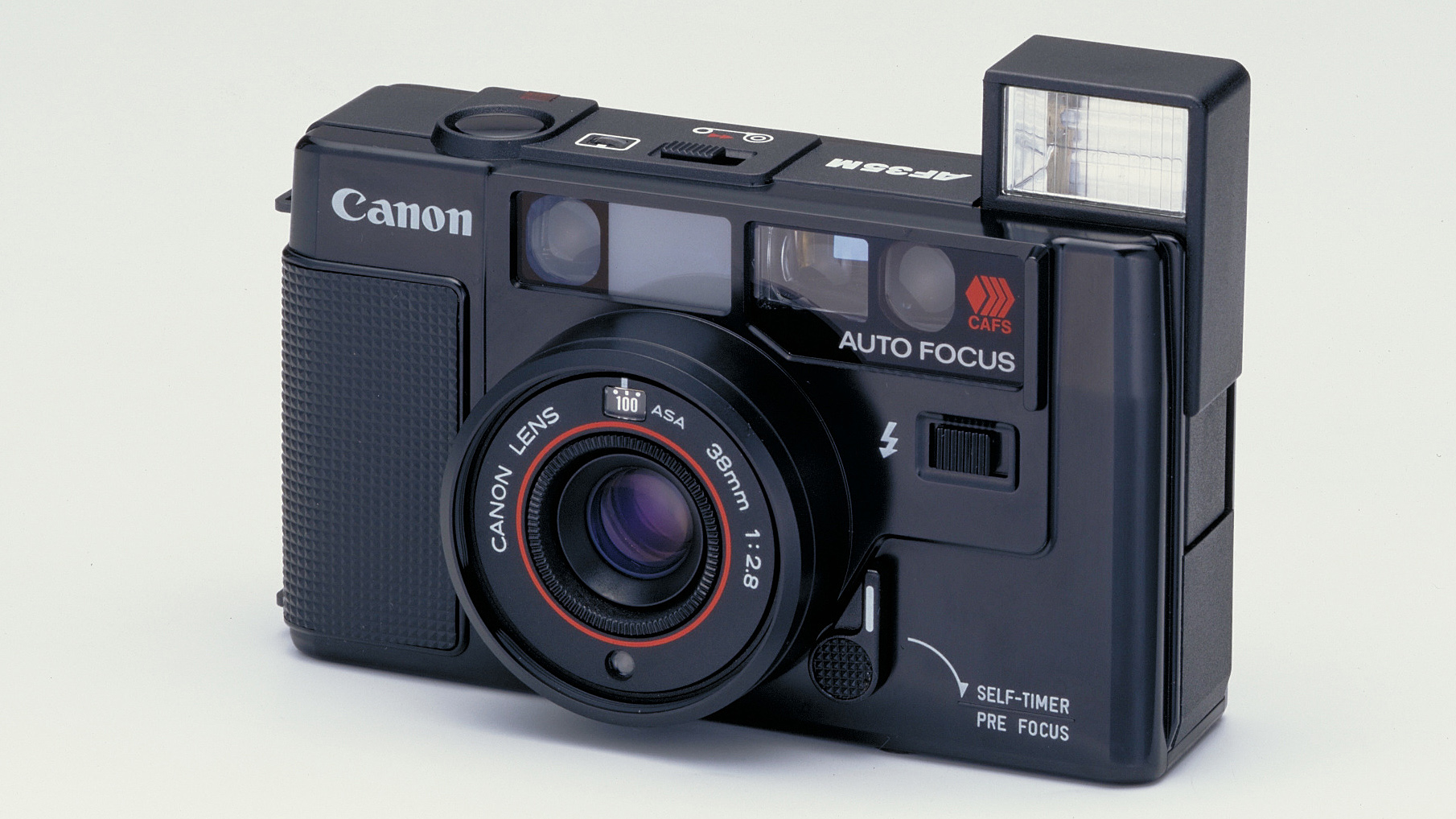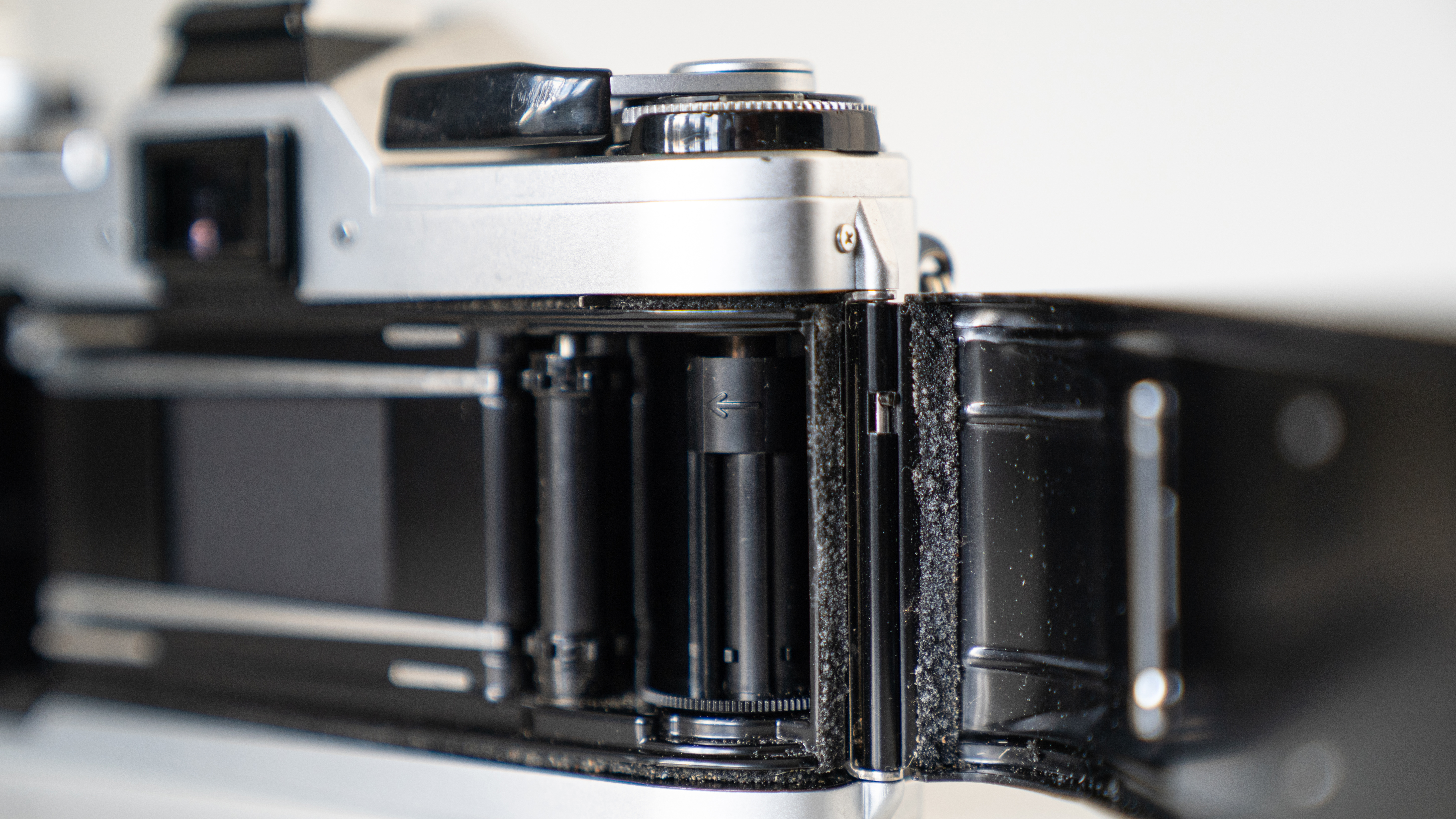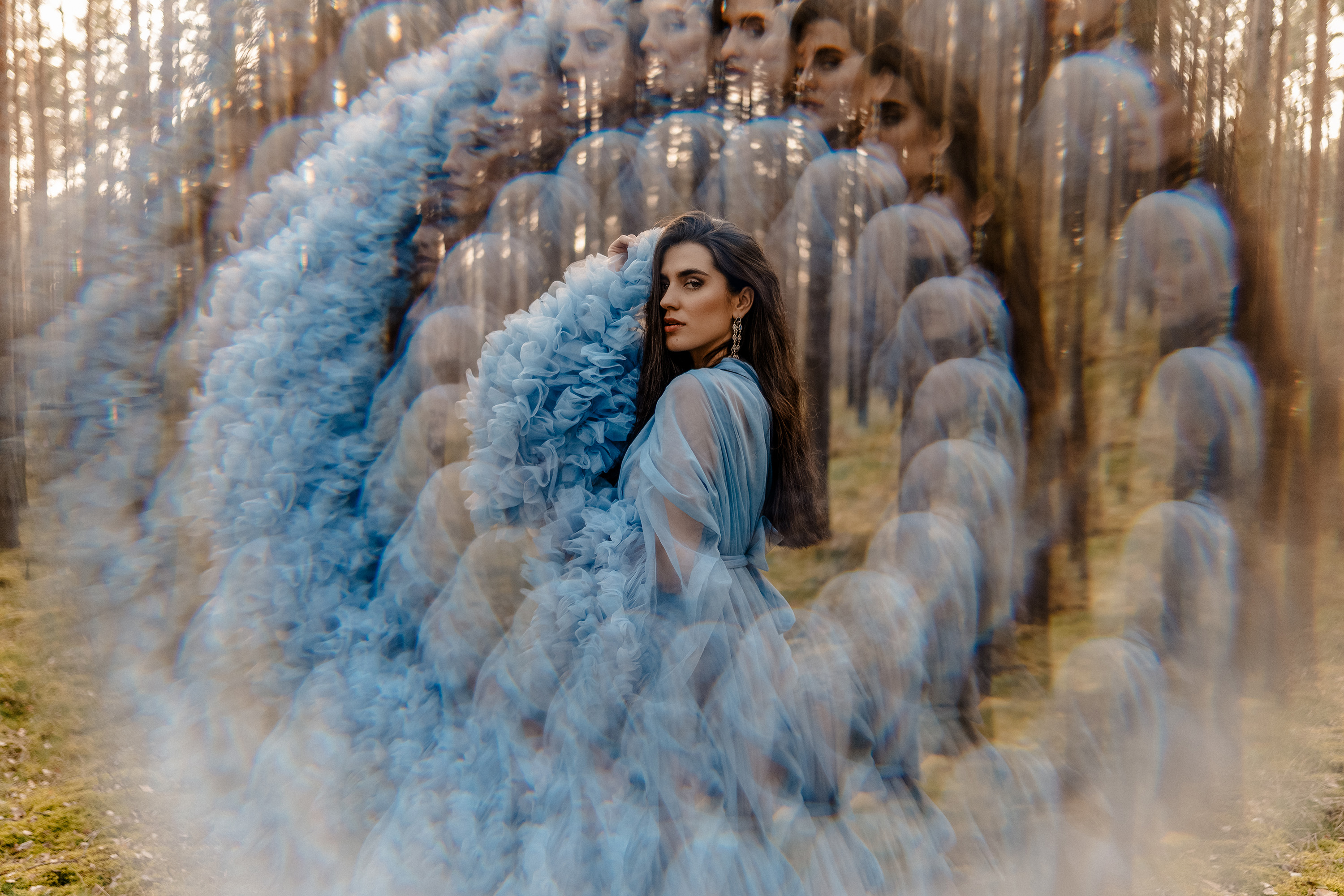Buying and using Canon film cameras
With an analog renaissance in full swing, we look at how you can give your old Canon 35mm film cameras a new lease of life
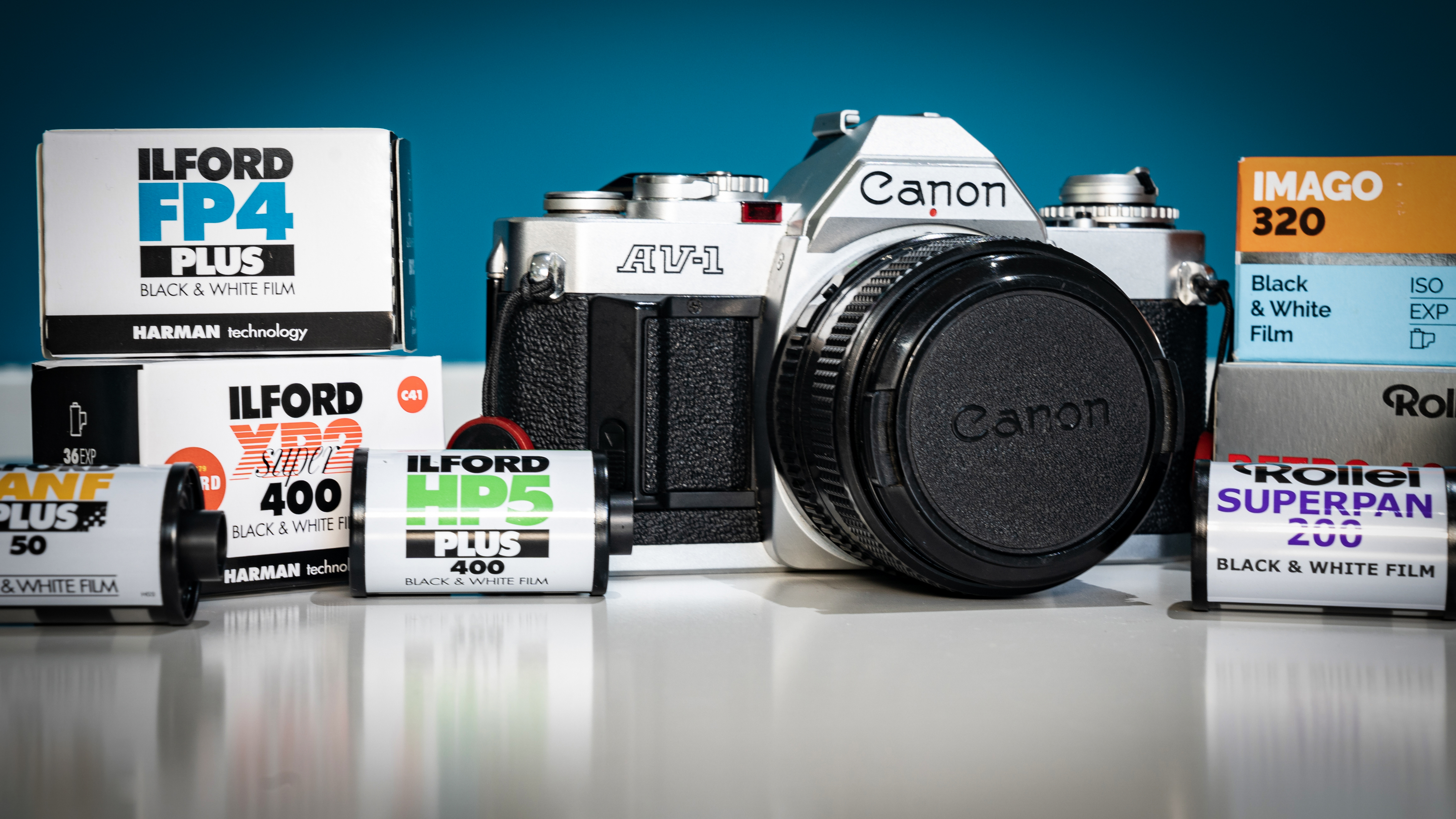
Abandoned in the quest for pixel perfection by camera makers and photographers alike, some film manufacturers endured. Spurred on by a new generation of photographers embracing the grain, the re-emergence of this retro medium has now sparked a new lease of life for our old film cameras.
So why should you consider shooting film? For some it is the anticipation and excitement of seeing the image days or weeks after pressing the shutter. For others, it is the distinctive aesthetic or the individual characteristics of each film stock. And then there are the tangible outputs; long lasting negatives and unique prints.
Many will counter-argue that film cameras are limiting. Your ISO is fixed, your frames are restricted to the length of film in your camera – and getting it right
in camera is essential. Yet these limitations can be both liberating and rewarding ways to improve our photographic skills.
For many of you, film was a stepping stone on your photographic journey to digital, yet for new and experienced photographers alike it still has so much to offer. It is no longer a case of film versus digital; the two mediums now coexist by offering photographers choice. So, now is the time to dust off your old Canon SLR, or buy a classic film camera,and enjoy the delights of analogue!
Buy a Canon film camera
What you need to know to find the perfect Canon film camera for you
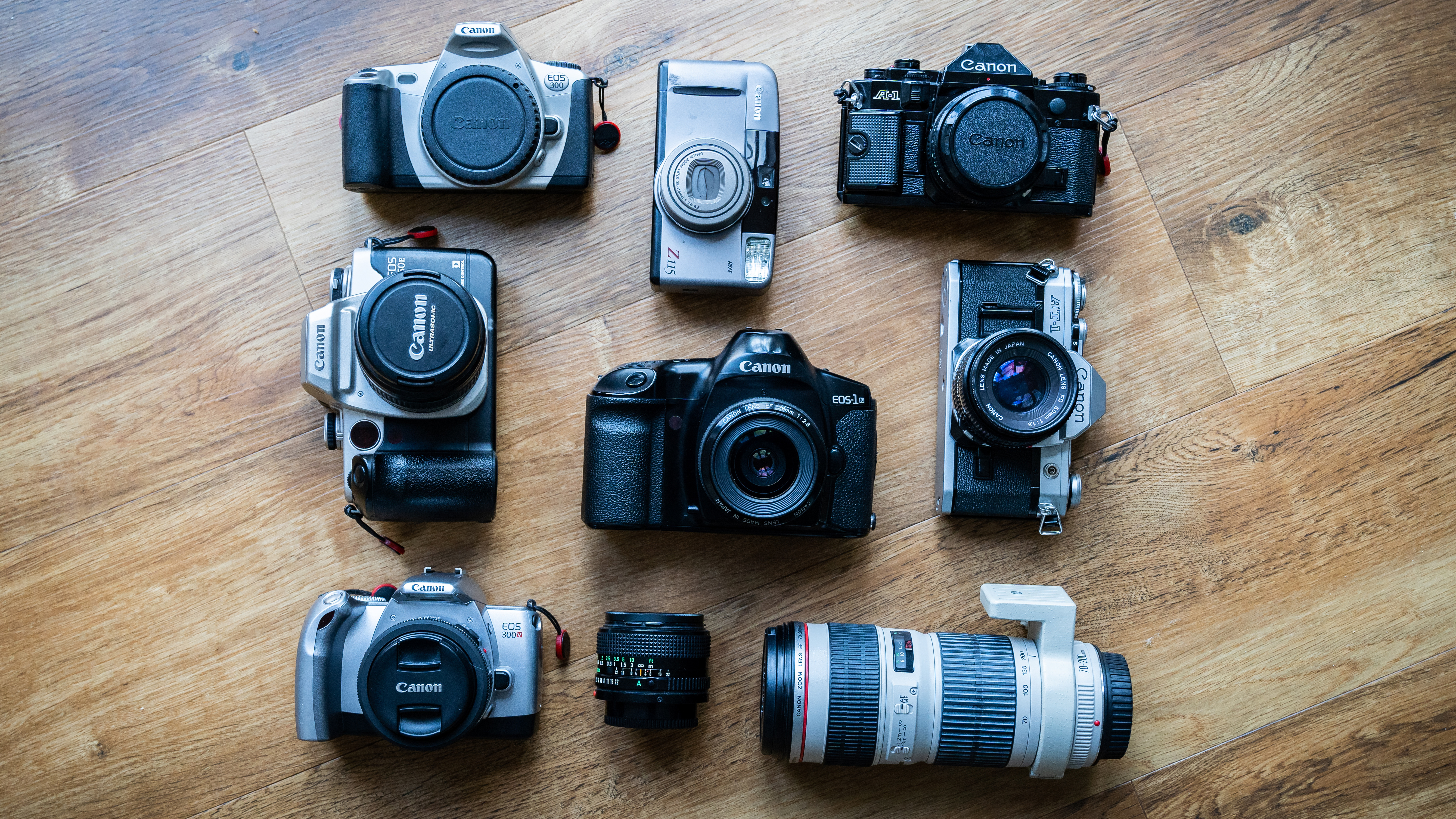
One of the unashamed pleasures of film photography is the selection of cameras available to us. While technology has moved on considerably since Canon’s last film model was released in 2005, their legacy of innovation and quality was founded in the film era, with some ground breaking cameras paving the way for the technological advancements we take for granted in today’s digital line up of cameras.
Thanks to the re-emergence of film, these cameras are once again more than just ornaments gathering dust on a shelf. Better still, these decades old machines are typically available at a fraction of their original selling price, meaning you can snag a real bargain.
The best camera deals, reviews, product advice, and unmissable photography news, direct to your inbox!
My pick of Canon film cameras
There’s a lot of different film cameras to choose from, here’s our best Canon picks
Canon’s first prototype camera, a 1934 Leica-inspired rangefinder, heralded the start of a long and illustrious line up of film cameras that covered everything from cheap plastic point and shoots, half-frame ‘Demi’ cameras, IXUS APS compacts all the way up to high-spec precursors of our modern digital SLRs. We take a look at some of our Canon favorites.

Canon EOS Rebel 2000 (1999)
An affordable introduction to the EF mount
EOS film cameras were manufactured between 1987 and 2004 and all of them utilize the EF mount. For Canon DSLR owners this makes them an excellent route back into film photography, particularly if you own EF glass.
Despite being relatively modern, EOS models are often much more affordable than their older manual-focusing cousins. The mid-range EOS Rebel 2000 (known as the EOS 300 outside North America , as well as the Rebel Ti/300V (2002) and Rebel T2/300X (2004) upgrades, are a great choice when a compact, light-weight yet highly capable camera is required thanks to fast and accurate AF and excellent 35-zone evaluative metering.
Expected cost: $30 / £30 (sometimes sold with its kit lens)
Alternatives: There are many alternatives, but the newer entry-level EOS Rebel K2 / EOS 3000V (2003) has a similar spec in an even lighter body.
Canon AF35M (1979)
The original autofocus point and shoot
This chunky point and shoot is notable in that it was Canon’s first compact camera to offer AF and auto exposure, as well as automated frame advance and rewind. It has a fairly average 38mm f/2.8 lens, a plasticky build and is anything but silent in operation, so will never be considered amongst Canon’s elite, yet its popularity stems from having one of the best metering systems of any compact at that time. It is capable of handling challenging light conditions and with today’s surging demand for film point and shoots it is a relatively affordable, readily available and perfectly capable option.
Expected cost: $40-50 / £50-80
Alternatives: The original Autoboy was the first in a long succession of compact AF Canon point and shoots that included a Mark II as well as modern fixed and zoom lens Sure Shot/Prima compacts.
Canon EOS 5 (1992)
The original eye-controlled focus
Canon introduced a unique feature into their Prosumer cameras when the EOS 5 (1992-98) became the world’s first 35mm SLR camera to have Eye-Controlled Focus, a technology not used in digital cameras until the R3 in 2021. The EOS 5 could select between one of 5 focusing points simply by looking at it. A 6th point activated a depth of field preview. This popular pro-spec’d camera also boasted evaluative, centre-weight average and spot metering, full manual operation as well as shutter and aperture priority AE and other intelligent program modes.
Expected cost: $70-80 / £50-75
Alternatives: Only four other 35mm cameras had this feature. The EOS 50E (1995-2000), EOS 30 (2000-04), EOS 30V (2004-07) and EOS 3 (1998-2007). The latter had a whopping 45 AF points.

Canon A-1 (1978)
Classic old school enjoyment
Canon’s ‘A’ series has proved very popular for those wanting a truly different experience to digital thanks to its manual focus FD mount. The pick of the bunch and the most advanced model of the 6 in the series is the A-1 (1978-85). Featuring both aperture and shutter priority auto exposure modes it was also the first SLR to offer a ‘program’ auto exposure mode. Its ISO settings range from 6 to 12,800 and its shutter speed from 30 secs to 1/1000 sec, while another notable feature is the easy-to-read, electronic display within the viewfinder.
Expected cost: $80-$200 / £120-£160 inc 50mm f/1.8 lens
Alternatives: The popular Canon AE-1 Program (1981) is a student favorite that built on the successes of the original AE-1 (1976) and introduced the Program Mode from the A-1.
Canonet G III QL17 (1972)
The ‘affordable’ rangefinder
An affordable alternative to the upmarket Leica, this 1972, 3rd generation Canonet rangefinder has a sharp, fixed 40mm f/1.7 lens and an integrated light meter housed in a well-built yet relatively lightweight and compact body. As one of a number of ‘Canonet’ models, the popularity of this particular one continues today due to the fact it was manufactured over the course of a decade and sold more than 1.2 million units.
Expected cost: $120-200 / £180-250
Alternatives: While the G III QL17 was the pinnacle of the Canonet line, older generations of Canonets, including options with inferior lenses, date back to the original in 1961.
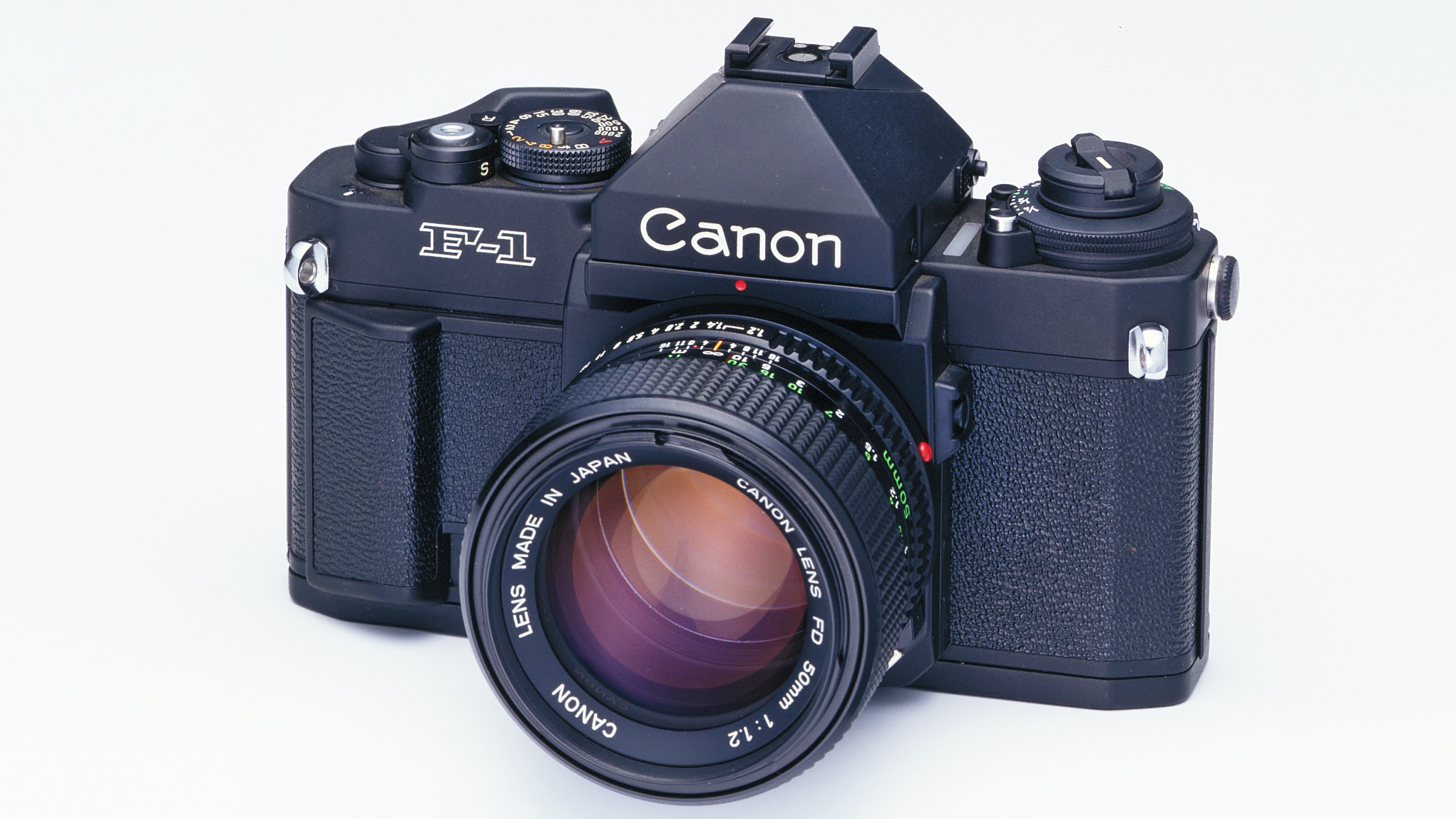
New Canon F-1 (1981)
Shoot like a pro
The ‘New F-1’ replaced the 1971 original F-1 as the FD Mount’s pro standard Canon SLR. Unlike today’s rapid product life cycle, Canon had committed to a 10-year run of the original F-1 and aside from the 1976 F-1n with 13 minor changes, they stuck to their guns. When 1981 finally rolled around there was much anticipation… The New F-1 camera delivered. It continued the F-1’s tradition of a tank-like mechanical body built around a modular system of interchangeable viewfinders, focusing screens, backs and motor drives, which let you customize what was a basic manual function camera to your style.
Expected cost: $200-300 / £250-300
Alternatives: The eventual ‘pro’ successors to the New F-1 were the super-fast EOS-1 (1989), 1N (1994) and 1V (2000). The 1V is arguably the best pro film camera ever made.
What to look for when buying
Aside from the cosmetic condition of the camera always check that the shutter works at different speeds, the meter reacts to different light, the film loads, advances and rewinds, the frame counter advances, nobs and dials move as they should, the shutter curtain is intact, the lens is free from fungus and the battery compartment has no rust or corrosion. If you’re viewing the camera in person, take fresh batteries with you and even an old roll of film to test out the body.
If you can’t physically see the camera before buying then carefully check the listing’s pictures and wording. If possible, try to buy from someone who has film tested the camera or is willing to be talked through the various tests.
Canon SLR mounts
Canon developed several mounts for its SLRs starting with the breech-lock ‘R’ (1959-64) and ‘FL’ (1964-71) mounts before their popular FD mount (1971–89), which featured an extensive line up of manual lenses and supported three key series of Canon film cameras: the ‘F’ (1971-81), ‘A’ (1976-82) and ‘T’ (1983-90).
However, in 1987, Canon took the bold decision to replace the FD mount with a non-compatible yet ground-breaking, fully electric EF (Electric Focus) lens mount for their new EOS system (Electro-Optical System). This move cemented Canon’s market position, and ultimately provided the bridge between film and digital SLRs.
Where to buy film cameras
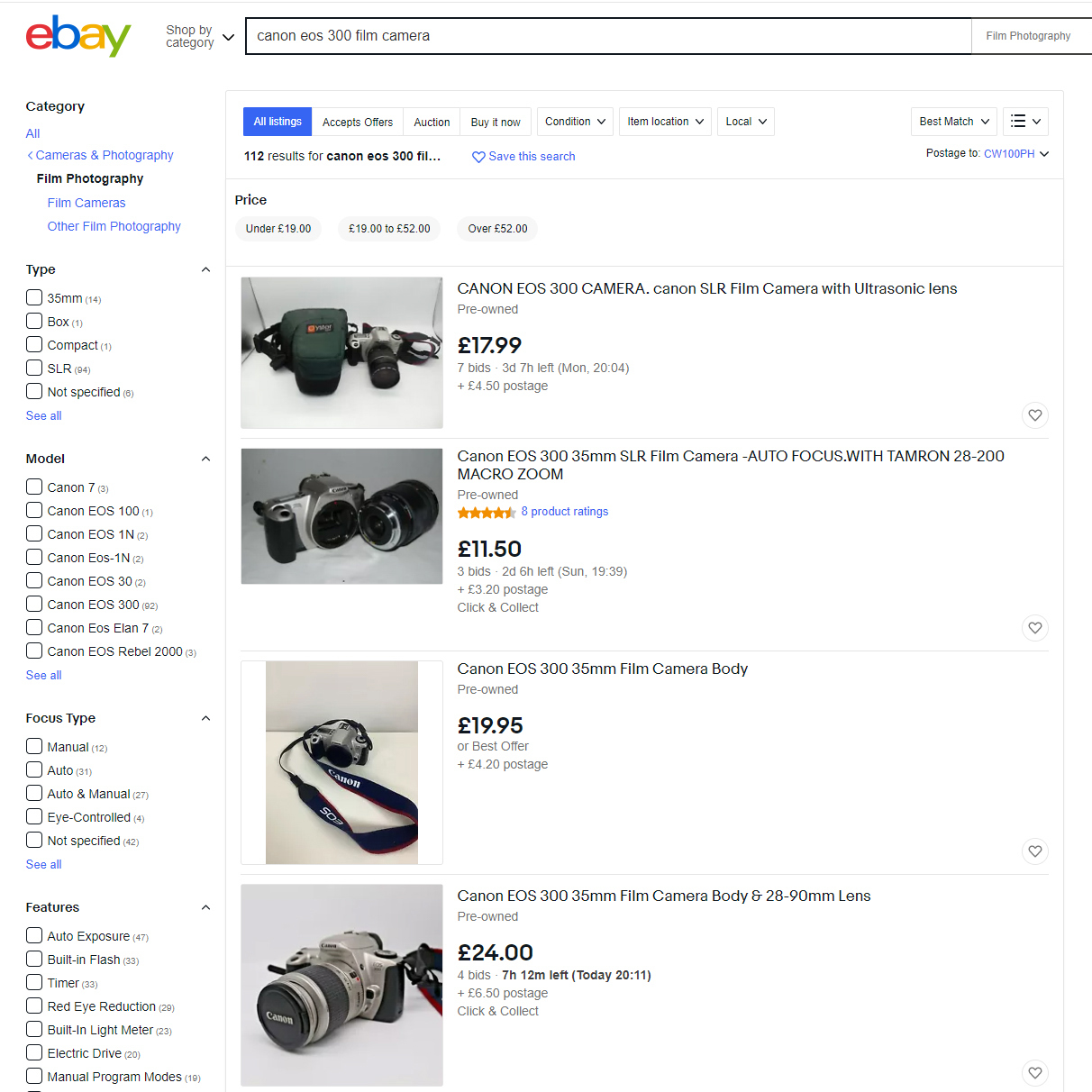
This will depend on your budget, appetite for risk and how desperate you are for a specific model. Online classifieds and auction sites, such as Facebook Marketplace and eBay, are good hunting grounds with a fantastic choice, although the risk of buying unseen or untested cameras is not without its pitfalls.
The safest option is to buy through a reputable, specialist second-hand camera retailer. The staff are often very knowledgeable and can advise on which model to buy, while your purchases typically also come with some level of warranty as well as piece of mind of its working condition.
Before you start shooting

Before using a film camera for the very first time, always run a test roll of film through it. Just make sure you’re using a roll of film you’re not precious about, you don’t want to ruin prized images! This will show any visual defects on the negatives, such as light leaks which are a common issue in older cameras. Light leaks are caused by deterioration of the light seal foam. Thankfully the foam is relatively cheap to replace, but if you are in any doubt, you can send the camera to a specialist for a CLA (clean, lubricate and adjust). Once you are happy the camera is in decent working condition then you can start shooting with the confidence that your photos will be okay.
Best 35mm film
Best film cameras
The best film scanners
Best darkroom equipment: photo enlargers, film tanks, trays
Matt Parry is an award-winning travel photographer, writer and speaker / presenter. He works as Head of Marketing for Ilford Photo.
